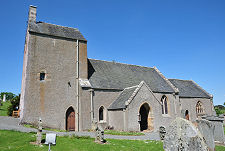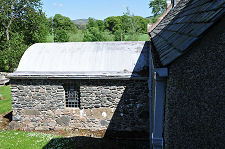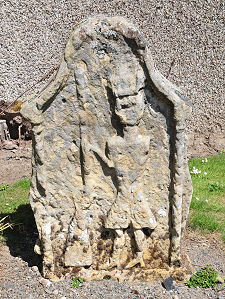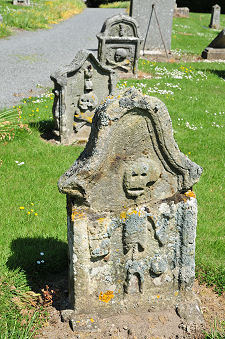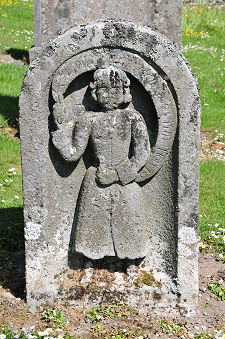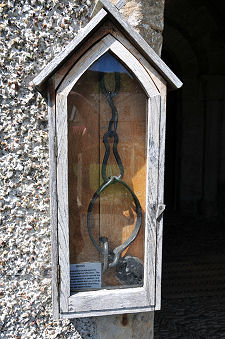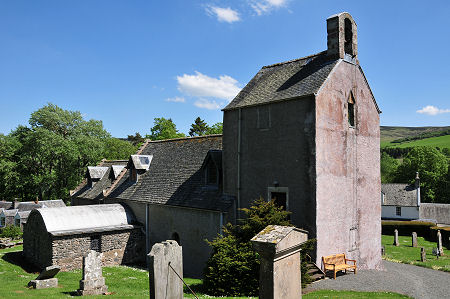 Stobo Kirk from the North-West |
Stobo Kirk stands a short distance from the B712, six miles south-west of Peebles. It is one of the oldest standing churches in Scotland and offers a fascinating history combined with a truly beautiful interior.
Much of the church you see today at Stobo can be dated back to around 1120, though as the tower and nave are on slightly different alignments, they may have been built in different phases. The story of the church actually goes back much further, to the late 500s. The first church is said to have been founded here by St Mungo (also known as St Kentigern), possibly during his tenure as Archbishop of Strathclyde from 585.
The most compelling legend from this era is that St Mungo converted Merlin to Christianity and baptised him at a spot near Stobo. The story goes that Merlin, one of two historical figures later combined to form the Merlin in the Arthurian legend, had been living in the forests that covered the area since the defeat of the army of Gwenddoleu by the King of Strathclyde in 573. This event is depicted in a stained glass window in the church.
In the late 1400s or early 1500s a porch was added to the main door on the south side of the church, and a chapel built almost as a transept on the north side of the church. These changes may have been made during the fifty year tenure as parish priest of Sir John Reid, who was also a poet and a royal courtier. The malaise into which the wider Church had sunk, and which helped spark the Reformation, can be seen from the pattern of parish priests in the middle of the 1500s. One, Adam Colquhoun, supposedly living a celibate existence, was succeeded in the post by one of his two sons. (Continues below image...)
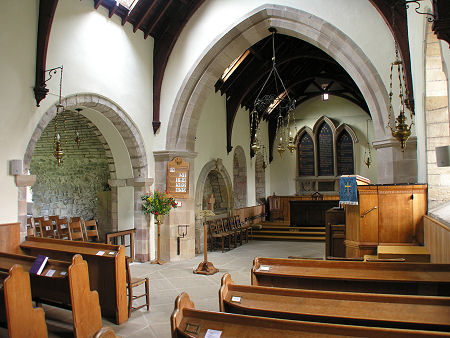 The Interior of Stobo Kirk |
Unlike many old Scottish churches, Stobo Kirk survived the Reformation, though the presence of "jougs", a metal collar attached to the wall by a chain, shows the more rigorous approach being taken to discipline in the post-Reformation church. The latter half of the 1600s were a time of great turmoil in the Church in Scotland. In Stobo, one minister was sacked as a suspected Covenanter. Another was sacked in 1689 for refusing to pray for the new king and queen, William and Mary.
In 1863, the church was extensively renovated, with the work being paid for by Sir Graham Graham-Montgomery of Stobo Castle. This doubtless did much to ensure Stobo Kirk's continued survival in a era in which many churches were simply being knocked down and replaced, or abandoned. One less welcome result was the complete removal of a round-headed Romanesque arch dividing the nave from the chancel, and its replacement with the more Gothic chancel arch you see today.
Further work was done in 1929 to rebuild the chapel immediately to the north of the nave, which had at some point been demolished, and to connect it into the body of the church. At the time this was believed to be the remains of St Mungo's original church, and while it isn't, the north aisle chapel has resulted adds a great deal of interest to the interior layout.
For today's visitor, the exterior of the church is less immediately impressive than you might hope, as the stonework is enveloped by a coat of grey harling or render, presumably added in 1863. The surrounding kirkyard is home to a number of fascinating gravestones. One, in memory of John Noble who died in 1723, carries a full length carving of him shown as a soldier, complete with musket. Another, close to the tower, dates back to 1694.
But if the exterior of the church is a little disappointing, the interior more than makes up for it. The nave and chancel are simply beautiful, while extra interest is added by the north aisle chapel. This is home to two extremely old grave slabs unearthed during the 1929 rebuilding. One carries a Latin inscription remembering Robert Vesey, who died on 10 May 1473. Another carries a fairly crude outline carving, looking to modern eyes like a cartoon figure, of a knight in armour, complete with sword, from the early 1500s.
The main body of the church is full of fascinating detail, with the great age of much of the structure being particularly obvious from the surrounds of the windows in the north side of the chancel and in the Norman stonework surrounding the main entrance.
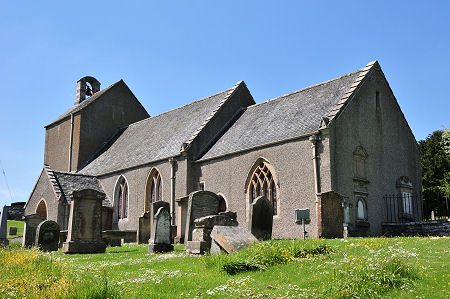 The Kirk Seen from the South-East |

|
|
|
Visitor InformationView Location on MapGrid Ref: NT 183 376 What3Words Location: ///taskbar.tower.deserved |
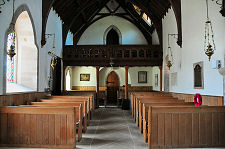 The Nave, Looking West |
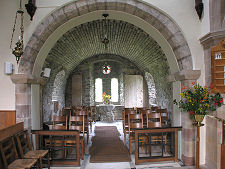 The North Aisle Chapel |
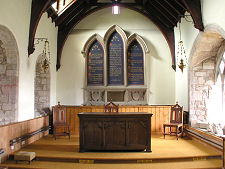 Chancel |
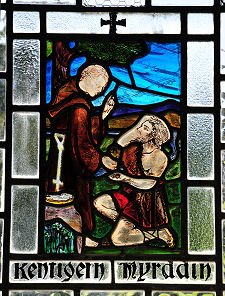 St Mungo and Merlin |
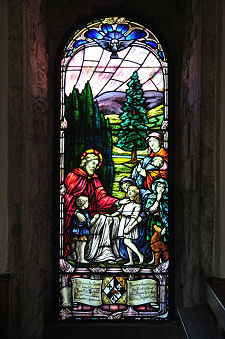 Stained Glass Window |
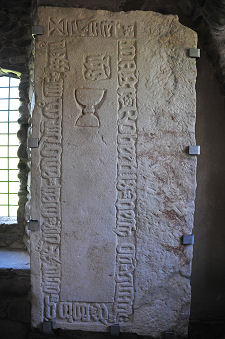 1473 Gravestone of Robert Vedsey |
